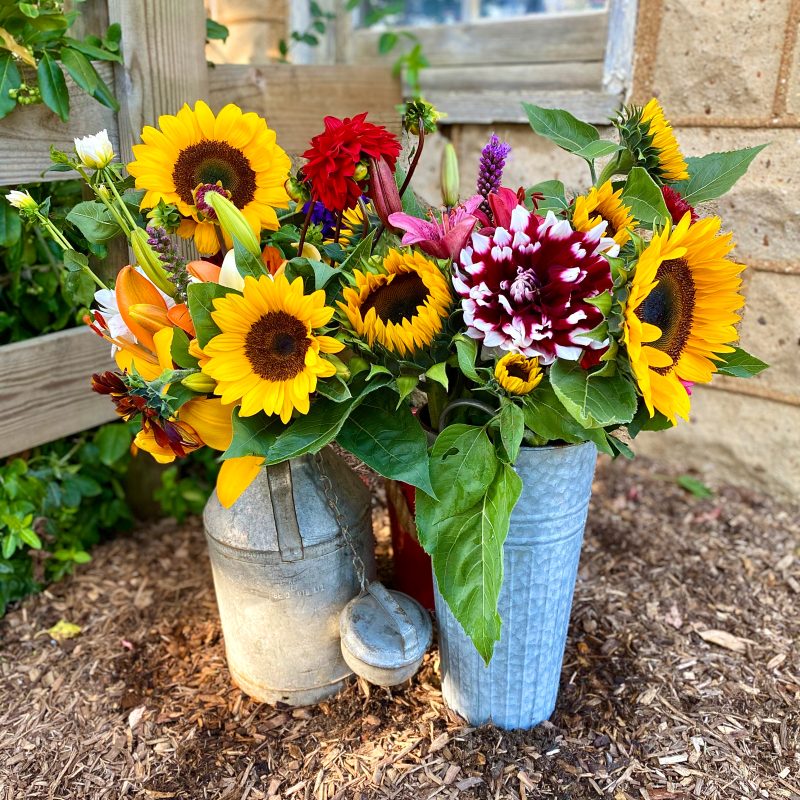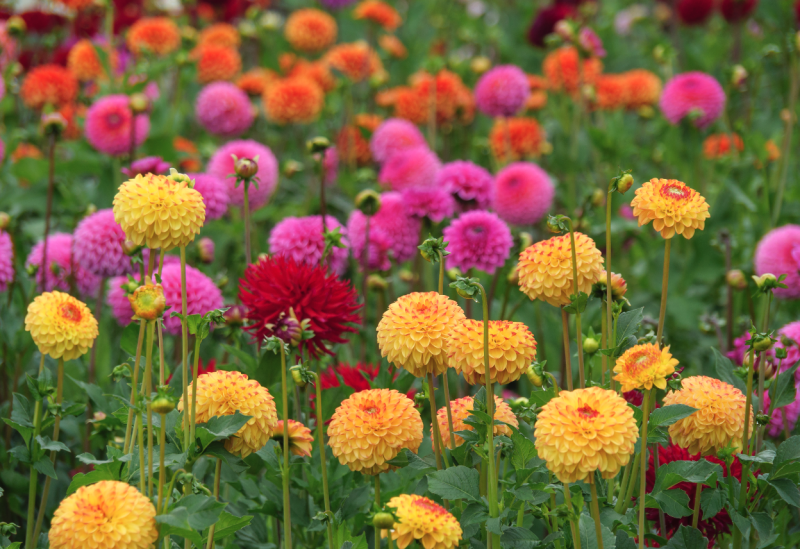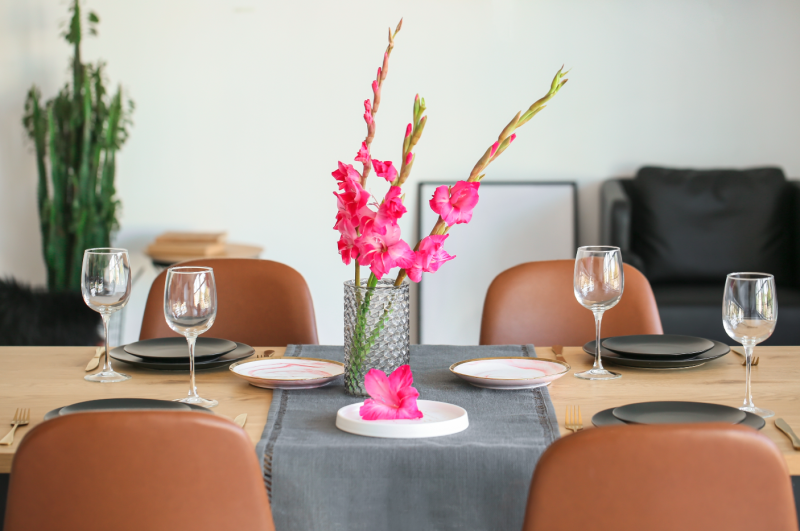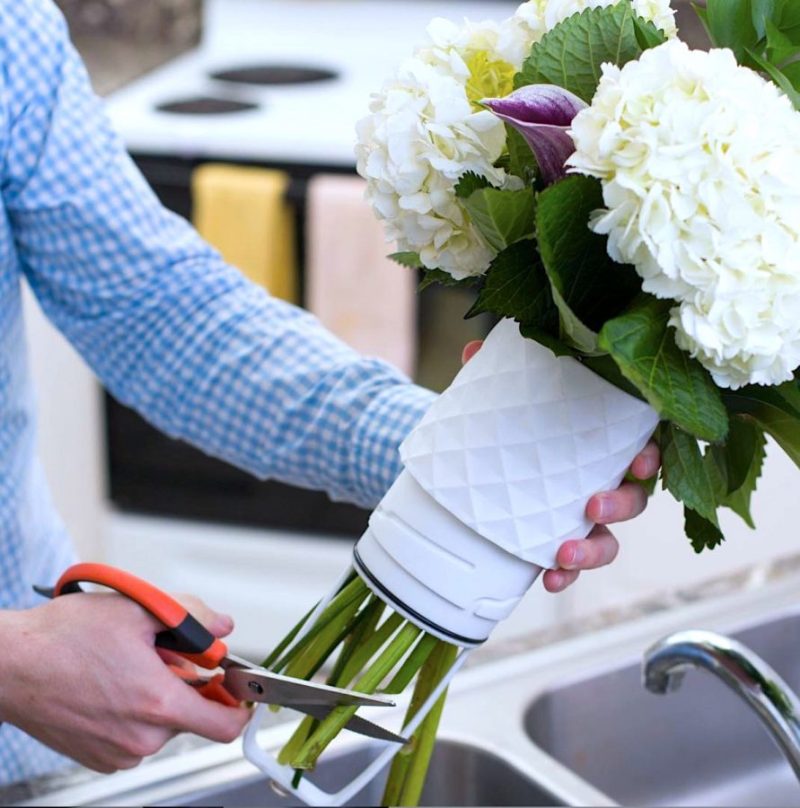We often get asked what’s the best way to make your freshly-picked flowers last longer when you get home.
Firstly, it’s worth noting that on average cut flowers last around 5 – 7 days in a vase. It depends on a few factors including how they’re cut, handled, and displayed. It also depends on the flower variety. Dahlias for instance have a shorter vase life of around 3-4 days. Whereas sunflowers can last up to 14 days if you pick them in bud form, when the flower head is relatively closed. Callas trump them all with an up to 3 week vase life!

Below are our top tips for extending the vase life of your flowers by at least a couple of days.
Cut earlier in the morning or later in the afternoon
Flowers cut in the heat of the midday sun will last approximately half as long as those cut in the cooler parts of the day. Fortunately our spring and fall flower festivals rarely hit extreme temperatures so this is not a huge factor, but worth noting. If you’re an early riser and want the freshest flowers that day, come at 9am when the gates open!
Make sure your shears and vase are squeaky clean
Cleanliness is the best way to stop bacteria from growing, and your flowers from wilting. First things first, make sure to wash or wipe down your shears/scissors and make sure that your vase is squeaky clean. If you wouldn’t drink out of it, then clean it again! Also, be sure to rinse of the base of the stems to remove any soil left over from the farm.
Cut at the correct blooming stage
There is no one-size-fits-all rule when it comes to the ideal stage of cutting flowers. It’s really variety dependent. With sunflowers for example, you want to cut them right as they are beginning to open up. This will ensure you get the 2 week vase life. Plus you get to enjoy watching the buds blooming before your eyes. Dahlias for example are on the opposite end of the spectrum. They must be allowed to fully bloom before cutting, since they won’t bloom more in the vase.

The first cut is the deepest, or at least it should be
When you’re cutting flowers in the field, try to keep the stems at least 12″ in length. You can always cut them shorter later to fit your vase, but you can’t make them longer! Immediately after cutting, strip all of the leaves from the lower 2/3 of the stem. The goal is to have no leaves in the water when they’re displayed. Foliage soaks up water in the vase which takes the nutrients away from the flower head.
Avoid direct sun a heat
Never set your bouquet in direct sun. As much as a vase on a windowsill looks visually appealing, it’s a sure ‘fire’ way for your flowers to bloom out quicker. The temperature of your home plays a part too. If you’re one of those people who likes to keep their home under 70 degrees, your flowers will last longer than someone who keeps it at a more comfortable temperature.

Fruit is not part of a flower’s healthy diet
Even though bananas, apples, pears, and peaches are good for us, they’re not good for flowers! Try to avoid placing your flowers next to fresh fruit. As fruit starts to ripen it produces ethylene gas, which causes flowers to wilt prematurely. Dahlias for instance are particularly sensitive to this.
Don’t forget daily maintenance
Fresh water will significantly extend the life of your bouquet. Dirty water breeds bacteria, and clogs the stem of the flower which in turn reduces the amount of water the flower can drink. Recutting the stems every few days will also allow the stems to continue to soak up water. Some varieties make the water turn almost instantly. If you see this happening, add a few drops of bleach into the vase. Not too much or it will beach the color of the flower!
By the way, how ingenius is this Amaranth Vase? The bottom screws off so you can easily trim the stems and change out the water!

Choose your water wisely
Depending on where you live and what type of water you have, it might be helpful to use filtered water for your bouquets. Softened well water for example can cause the flowers to wilt faster.
Feed your flowers
Flower food is often a great way to extend the life of your flowers. It contains sugar to feed the flowers, acid to maintain the correct pH and bleach to kill bacteria. Soda comes in a close second. The sugar and acid in the soda mimics the same effects as flower food. Add a few tablespoons or clear colored soda every time you change the water.
